Tokyo’s Asakusa Hanayashiki Revamps Haunted House with Traditional Edo Terror
Newsfrom Japan
Culture Entertainment- English
- 日本語
- 简体字
- 繁體字
- Français
- Español
- العربية
- Русский
In Business Since the Edo Period
Asakusa is a classic Tokyo tourist spot, known for the temple of Sensōji with its Kaminarimon, or “thunder gate.” A short distance to the west of the temple, the compact amusement park Asakusa Hanayashiki has been drawing crowds for 170 years. With its retro roller coaster, merry-go-round, and other attractions, it is a perfect spot for a child’s first theme park visit, and remains popular with families.
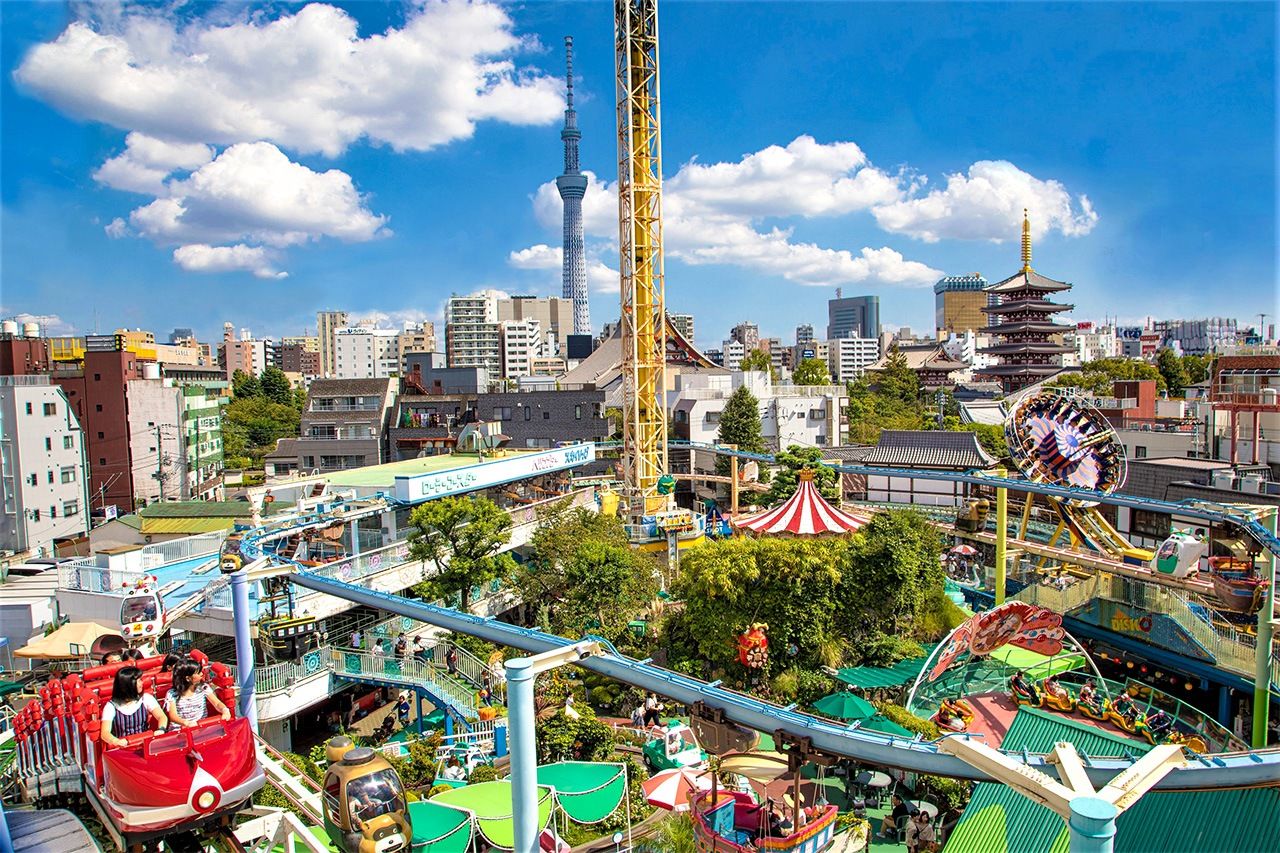
Asakusa Hanayashiki celebrated its 170th anniversary on August 7, 2023. Just a five-minute walk from Asakusa Station, it preserves a nostalgic atmosphere despite its location in the heart of the city. Its roller coaster (at bottom left) celebrates its seventieth anniversary this year. (Courtesy Asakusa Hanayashiki)
Asakusa Hanayashiki is Japan’s oldest amusement park. It opened in 1853, in the twilight of the Edo period (1603–1868), which was the same year as US Commodore Matthew Perry’s transformative arrival off the Japanese coast with a fleet of ships. As the name Hanayashiki (literally “flower estate”) indicates, it began as a botanical garden centered on peonies and chrysanthemums.
In the Meiji era (1868–1912), the park added rocking horses and other play equipment, while it also kept animals such as elephants, tigers, bears, and lions from 1880 until the 1930s.
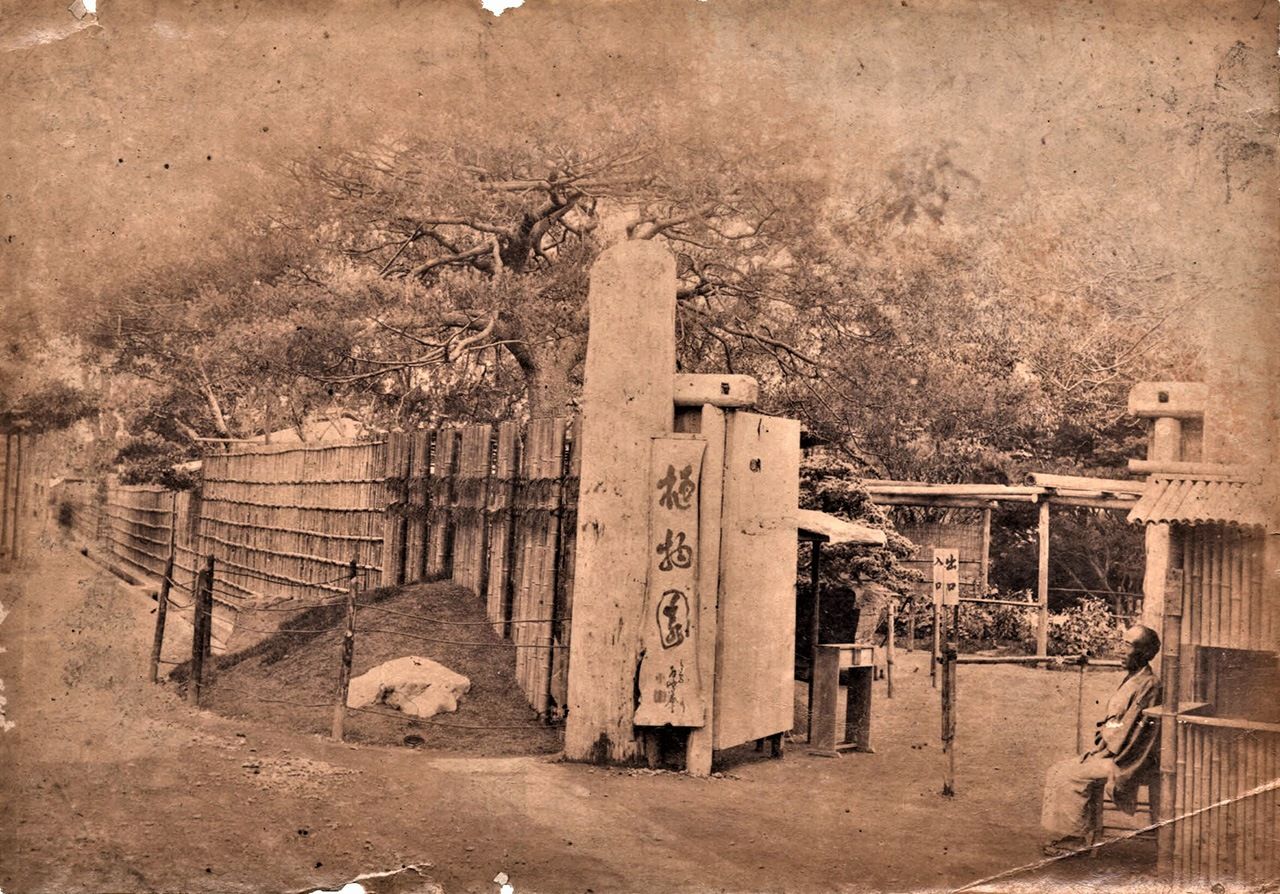
The park opened after receiving land from Sensōji, exhibiting 80 different kinds of large-flowered chrysanthemums. (Courtesy Asakusa Hanayashiki)
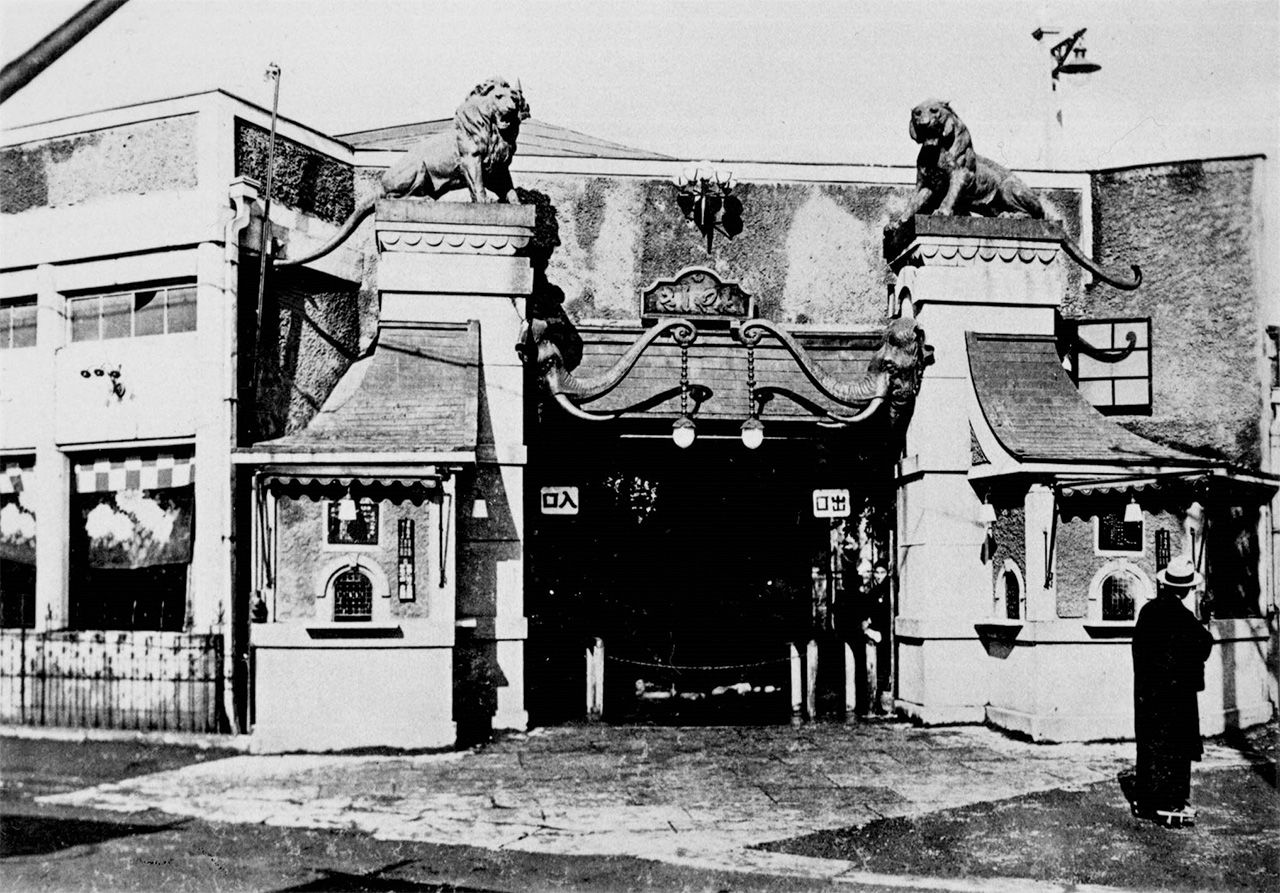
The entrance in 1926. The park’s five tiger cubs became a hot topic, and Emperor Taishō is even said to have made a secret visit. (Courtesy Asakusa Hanayashiki)
Asakusa Hanayashiki entered its current incarnation as an amusement park in 1949. The oldest attraction still in use is House of Surprises, which opened in 1947. Japan’s oldest roller coaster started running in the park in 1953, and its course skimming over buildings and between local houses got people talking.
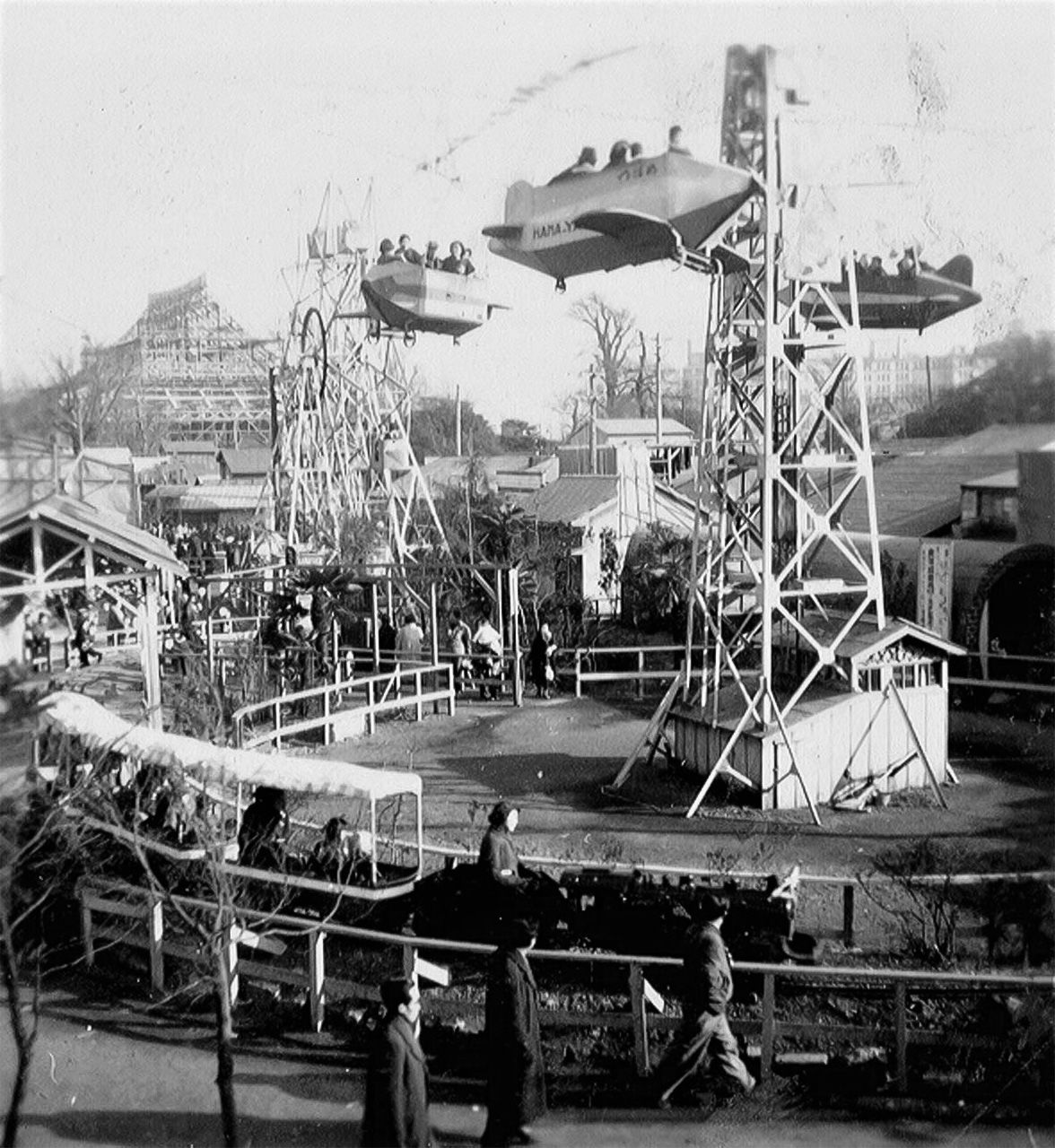
In 1949, the park changed its name from Hanayashiki to Asakusa Hanayashiki. Entry to the park grounds was free until 1985. (Courtesy Asakusa Hanayashiki)
Since opening in 1984, the haunted house has rivaled the roller coaster for popularity. At first, it was a straightforward walk-through style attraction with around 60 meters of passages featuring severed heads and other scary creatures.
A 2011 reboot added the kaidan (ghost story) “Sakura’s Grudge,” about a curse in the park deriving from the cutting down of a large, old cherry tree. An area with a group of dolls all lined up was particularly chilling.
Although the monsters and ghosts were all operated by machine, stories spread among the staff and customers of sightings of child ghosts or sensors operating even when nobody was there. This led to the growth of an urban legend stating that the park was one place where real ghosts could be seen.
Edo’s Four Big Kaidan
This year’s latest update of the haunted house has the theme “An Edo Test of Courage,” basing itself around the four most famous kaidan from the city of Edo (the former name for Tokyo). The stories have appeared several times in different versions, which are sometimes complex with many characters, but their basic elements are introduced below.
“Yotsuya Kaidan”
Based on an incident that took place in a district called Yotsuya, near today’s Ikebukuro, around 1700. The story centers on a husband called Tamiya Iemon and his wife Oiwa. Iemon betrays Oiwa for the sake of personal advancement, and slowly poisons her; after she succumbs to the poison she becomes a vengeful ghost. The gradual degeneration in Oiwa’s appearance culminates in a terrifying scene in which her hair falls out in clumps when she combs it.
“Banchō sarayashiki” (The Dish Mansion of Banchō)
This story takes place at the estate of a hatamoto, a high-ranking Tokugawa retainer, in Banchō, Edo. He owns and cherishes a set of 10 decorative plates. However, one day a servant called Okiku accidentally smashes one of them. In a rage, the hatamoto beats Okiku and ties her up in a cramped room of his mansion. She escapes and flings herself into a well on the estate. From this time on, her voice can be heard every night from the well, counting the dishes one by one.
“Botan dōrō” (The Peony Lantern)
A young samurai called Hagiwara Shinzaburō falls in love with Otsuyu, the daughter of a hatamoto. Every night, she comes to visit him by the light of a peony lantern, but he discovers that she is actually a ghost. Knowing this, he sticks ofuda talismans all around on his house so she cannot get in. However, Otsuyu bribes his servants, who remove the ofuda . . .
“Kasanegafuchi”
An old story known particularly through a retold version by the rakugo performer San’yūtei Enchō (1839–1900). This begins with a hatamoto called Fukami Shinzaemon killing a moneylender called Sōetsu, and develops into a complex story of vengeance.
New Encounters with Old Terrors
Haunted houses in Japan date back to the Edo period. An 1836 show exhibition at the temple Ekōin in Ryōgoku, Edo, seems to have been the first. It featured well-known scenes from kaidan recreated by karakuri mechanical dolls. From around this time, there was a trend for creating ever more realistic and grotesque dolls for such entertainment.
The latest incarnation of the Asakusa Hanayashiki haunted house calls back to the terrors that thrilled citizens in the late Edo period.
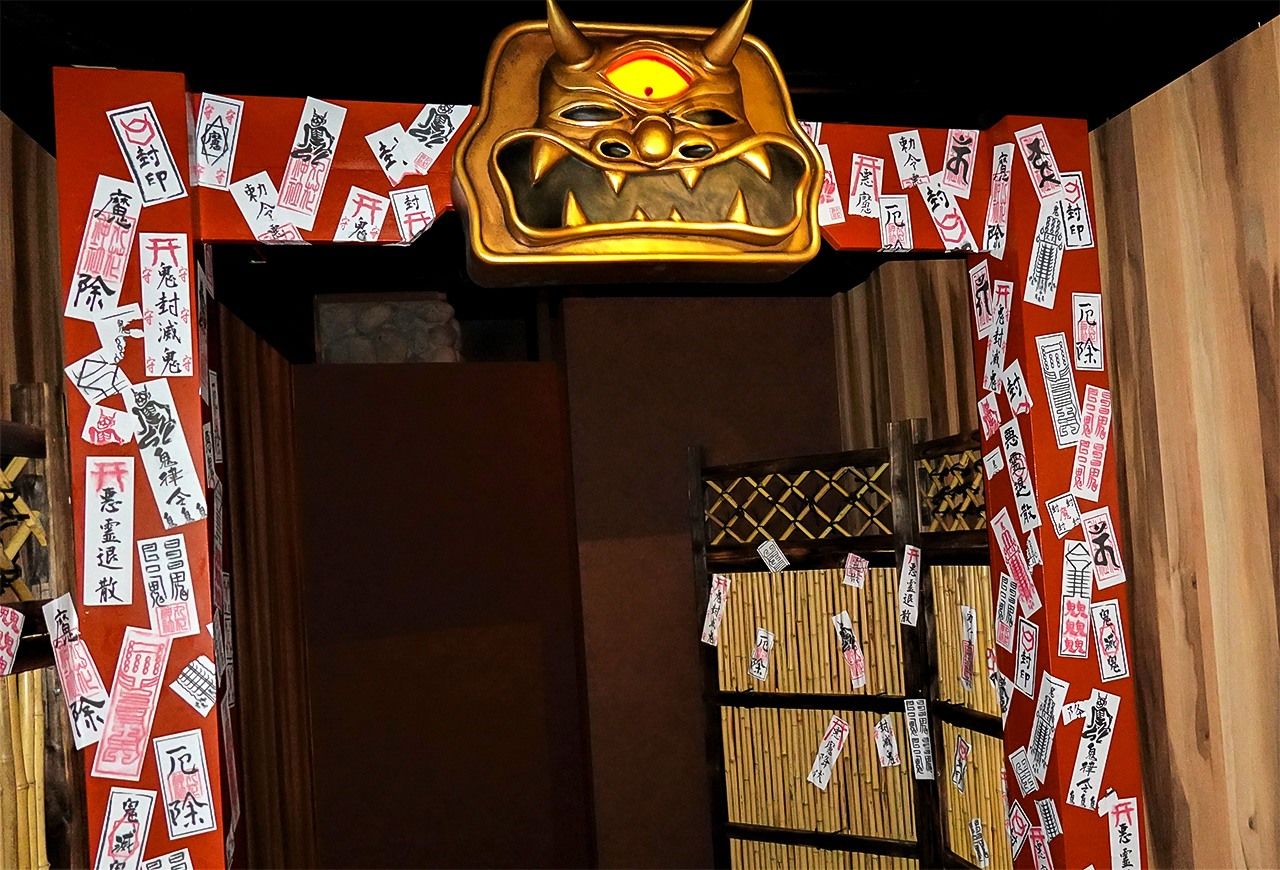
The entrance to the haunted house is covered with protective amulets. (© Amano Hisaki)
A park spokesperson says that as it may be the first haunted house visit for some young children, this version has been made a little “milder” than earlier ones. Even so (and I will refrain from giving too much away), it is certainly enough to give a healthy fright.
Children’s music plays softly at the entrance. Inside, it is pitch black, so visitors must proceed step by step with their hands against the wall, but they may find themselves stopping suddenly at the sounds of eerie wails and screams. The mission is to arrive at the oni shrine at the far side, where they touch the crystal ball of exorcism.
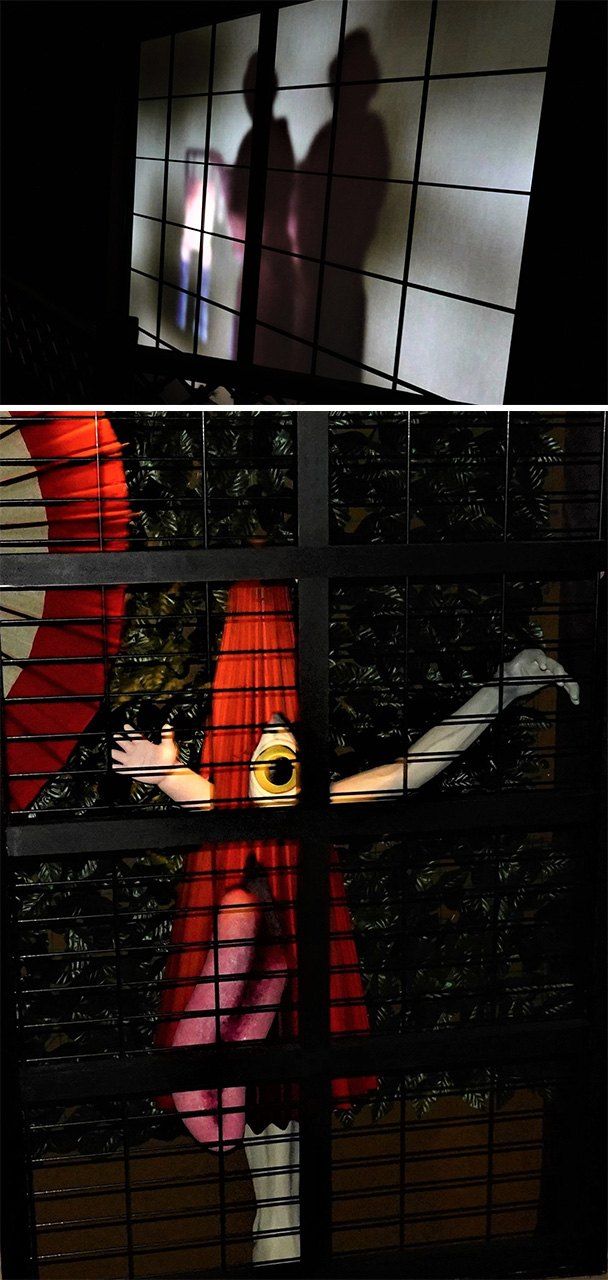
Triggered by sensors, ghosts and monsters appear suddenly from the darkness. (© Amano Hisaki)
Appealing to Foreign Visitors
Apart from its new haunted house update, the park is adding other attractions to mark 170 years since its founding.
Panorama Time Travel is a multiscreen attraction showing images of Asakusa past and present, including a view of the local area taken from the top of Bee Tower, a ride that is a much-loved symbol of the park. A “mystery photographer” device using augmented reality technology lets visitors search for supernatural yōkai in the park. Projection mapping by the digital art company Naked displays Japanese flowers through the seasons.
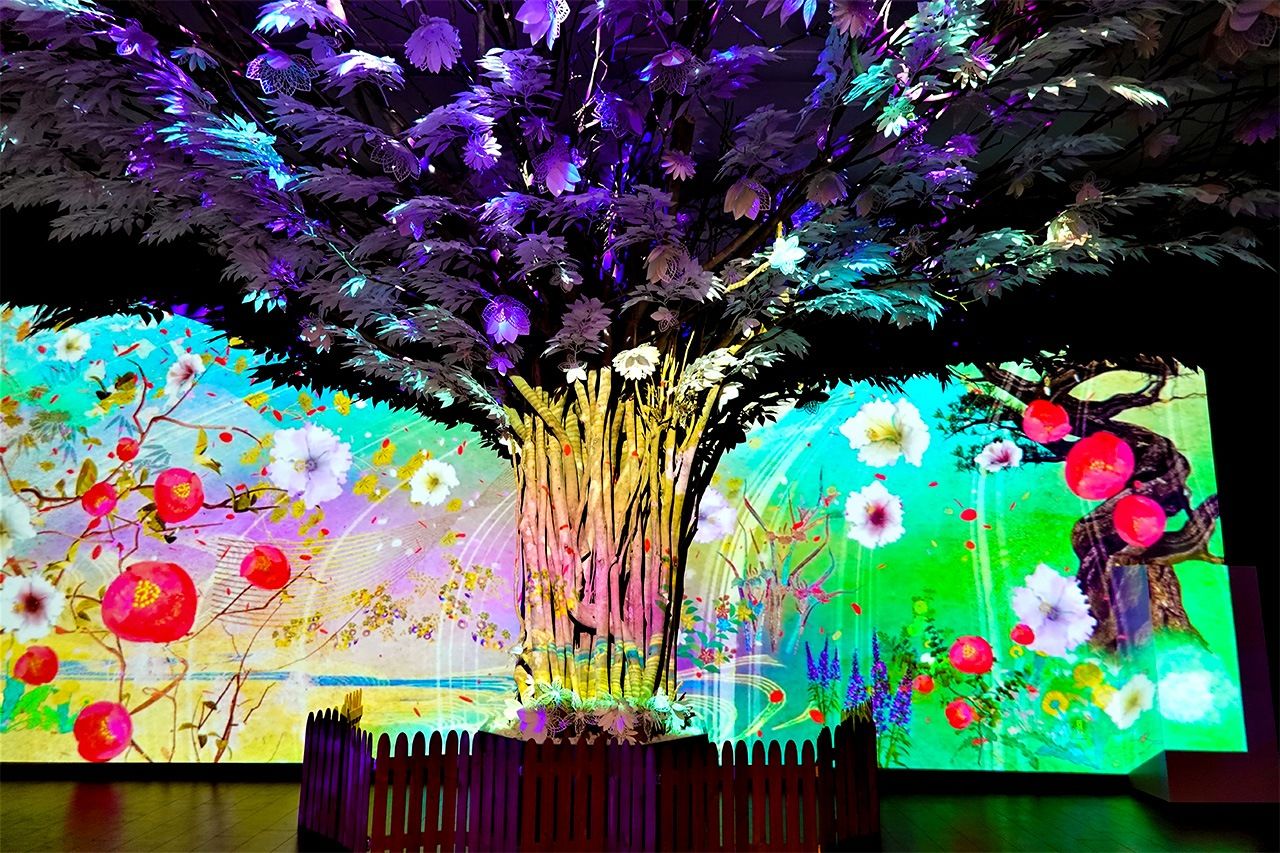
Digital flower displays recall the park’s early days as a garden. (© Amano Hisaki)
There is also a newly opened refreshment stand called Ohanami Chaya, the “flower viewing teahouse,” which sells “panda car” cakes in the shape of a ride associated with the park, and eye-catching hanamusubi “flower rice balls.”
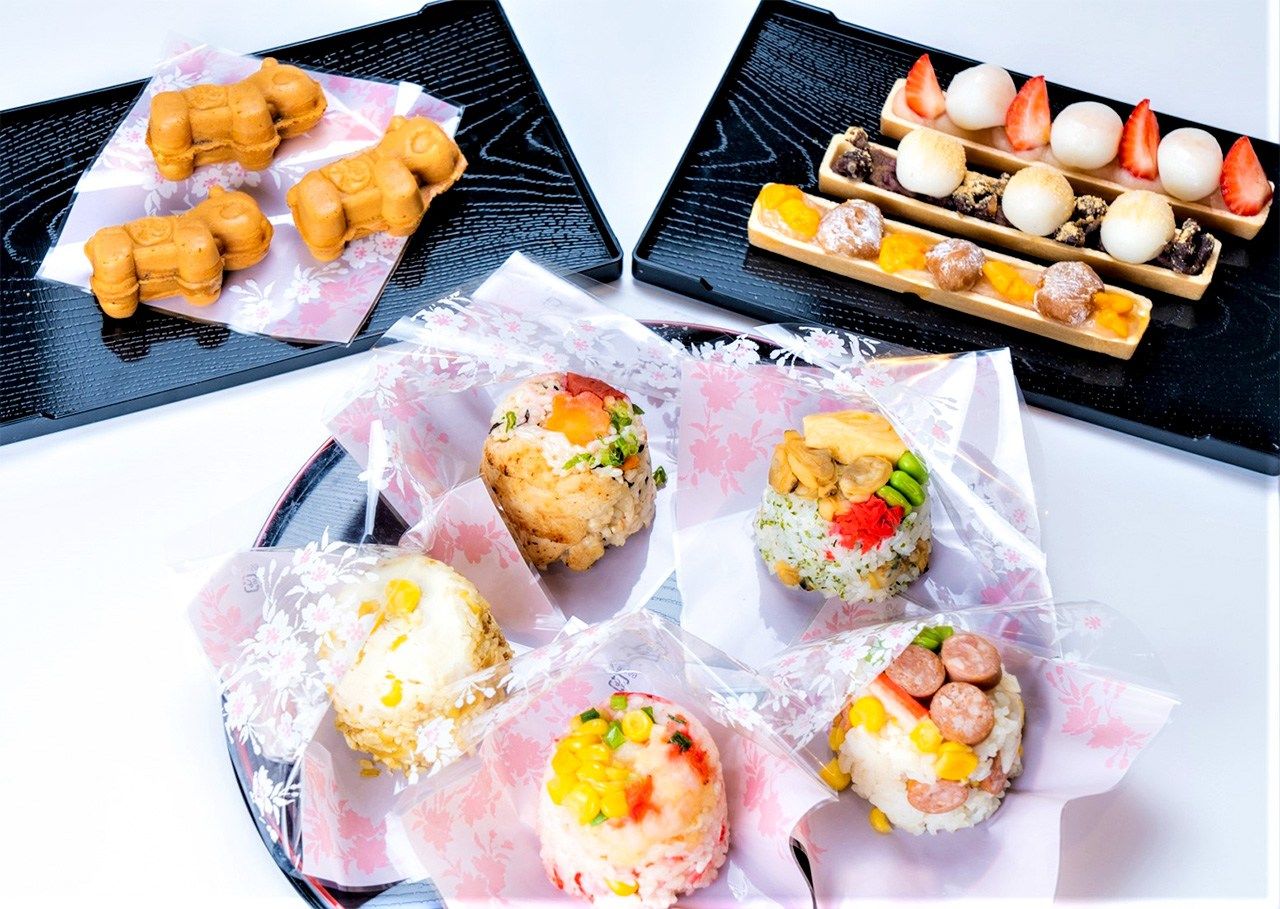
Clockwise from top left: pandakā yaki (panda car cakes), dessert monaka (wafer cakes), and hanamusubi (flower rice balls). (Courtesy Asakusa Hanayashiki)
The common thread in the recent changes is to maximize indoor activities, as climate change has brought more searing summer heat and heavy downpours.
Nishikawa Toyoshi, the president of the Hanayashiki company that manages the park, says, “Outdoor facilities will always be affected by the weather. The latest remodeling was prompted by the aim to improve our indoor attractions.” The goal is to attract visitors to Asakusa who can enjoy walking through Sensōji and the Nakamise shopping street in the morning or evening and cool down at the park in the heat of the day.
The inclusion of traditional scary tales in the haunted house, as well as food like rice balls and wagashi sweets, is also calculated to appeal to foreign tourists, who are coming back to Asakusa in droves. Visitors from Asia are a common sight in the park.
For this reason, during the closure for refurbishment, new signage in Japanese, English, Chinese, and Korean was added. The park also plans to work on improvements to its English-language website and promotions to travel companies in a bid to encourage more foreign visitors.
“We’ve stayed in business for 170 years by planning and providing attractions that fit the time,” Nishikawa says. “While it’s important to preserve our history, by adding a taste of Japan, Asakusa-style, we’d like to get the word out about Hanayashiki overseas on social media and so on.”
(Originally published in Japanese on August 5, 2023. Banner photo: Hanayashiki President Nishikawa Toyoshi stands outside the haunted house. © Amano Hisaki.)